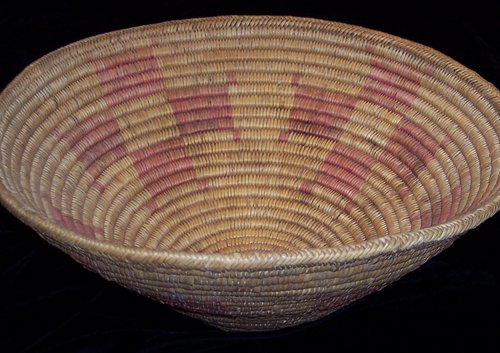The Native American Arts Collection

To tell the story of the Native American cultures of the Southwest through their arts is a daunting task. Yet, in the Millicent Rogers Museum collection is a representative body of work from the prehistoric to the present that broadly encompasses the rich and diverse heritages of Native American cultures in the region.
The items in the museum's collection include materials from the various tribal entities in New Mexico, including the Navajo, Zuni, Pueblo, and Apache. Because Northern New Mexico, and particularly Taos, served as centers of trade throughout the West, the MRM also has a remarkable collection of Plains Indian material, Mexican Indian art, and representative pieces from other Western Native American cultures.
The examples of Native American textiles, pottery, baskets, Katsinas, and jewelry on display illustrate the use and the life of the objects in their time.
The outside world knew fairly little about what katsinas were until Frank Waters of Taos published his nonfiction Book of the Hopi (1963), which gave readers some insight (albeit through the eyes of a non-Hopi) into the lore, language, and traditions of the Hopi people. Still later, the collection of katsinas assembled by the late Arizona Senator and sometime Presidential candidate Barry Goldwater brought these images into popular culture. This example, one of the oldest in the museum's collection, is fully articulated, with each element hand-carved and then painted by the maker.
For centuries, there has been a widespread cross-pollination among the Native American, Hispanic, and Anglo artists and traders in the region. There is perhaps no better example of these cultural crossovers than this Navajo weaving. Fifty years before this was made, the Navajos were producing simple but elegant horizontally banded weavings. Influences from Hispanic weavers, particularly during the Navajos’ enforced exile at Bosque Redondo (the Long Walk of 1864), led to the introduction of these geometric patterns. Finally, the importation into the Southwestern patterns of aniline-dyed, Germantown-milled yarns by traders meant that Navajo weavers were able to produce brighter and brighter weavings. The end result was this piece that, while Navajo produced, includes elements from Hispanic and Anglo influences as well.
Jicarilla Apache Basket This basket was donated to the museum by the family of famed Pueblo potter Maria Martinez of San Ildefonso Pueblo. The family story, which is supported by numerous images (also in the museum collection), is that the basket was traded by an Apache to Martinez for one of her famed pots. The idea of trading arts pieces was, and still is, an important part of Native American life in the region.
This basket was donated to the museum by the family of famed Pueblo potter Maria Martinez of San Ildefonso Pueblo. The family story, which is supported by numerous images (also in the museum collection), is that the basket was traded by an Apache to Martinez for one of her famed pots. The idea of trading arts pieces was, and still is, an important part of Native American life in the region.
Native American Arts

The unique Native American Collection at the Millicent Rogers Museum gives a comprehensive overview to the Native American cultures of the Southwest. The examples of Native American textiles, pottery, baskets, Katsinas, and jewelry on display illustrate the use and the life of the objects. The objects in the Native American collection have a utilitarian use and a sacred life, yet they were also created and admired as artistic expressions. The exhibitions illustrate the aesthetic beauty of the objects and the museum respects the objects as ceremonial pieces, making them more than simply utilitarian goods.



